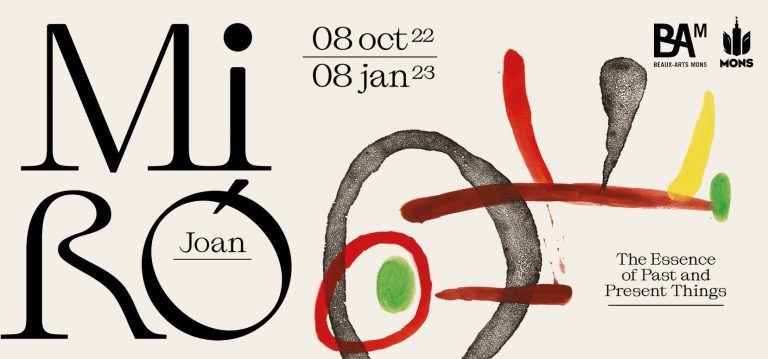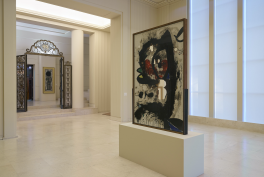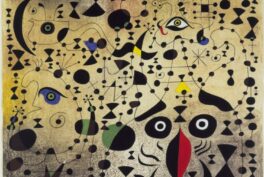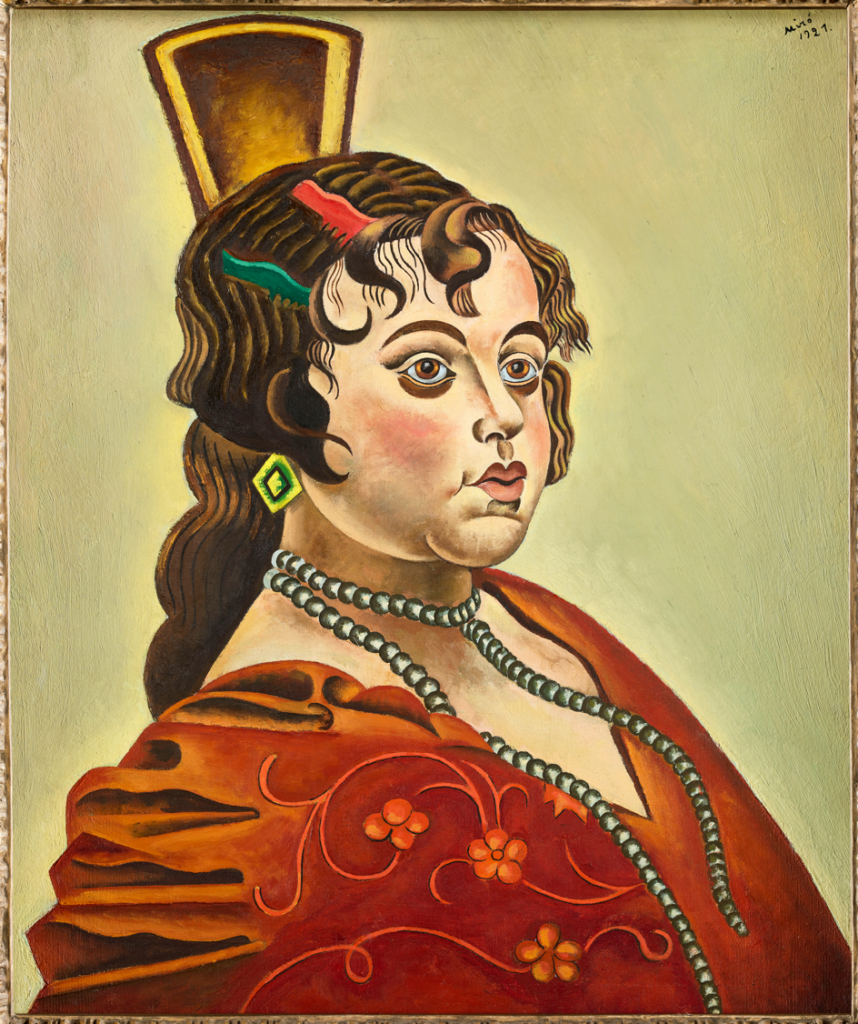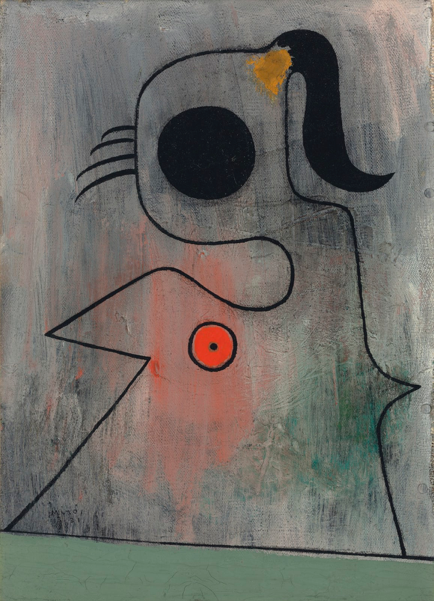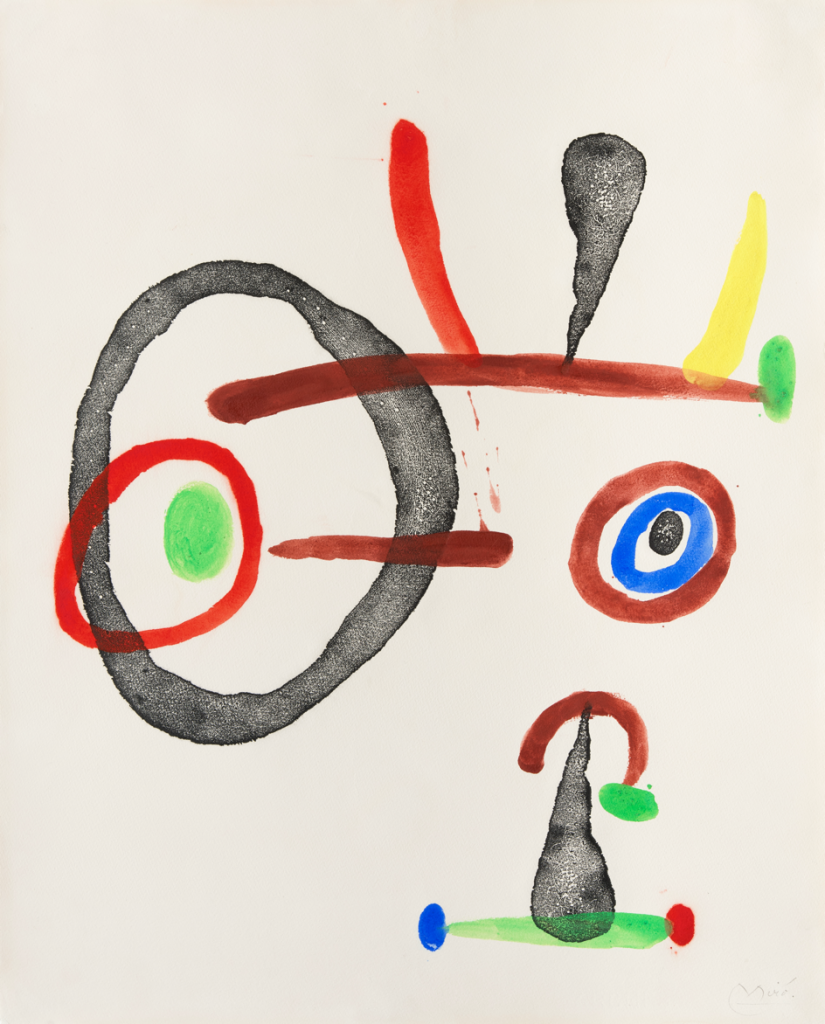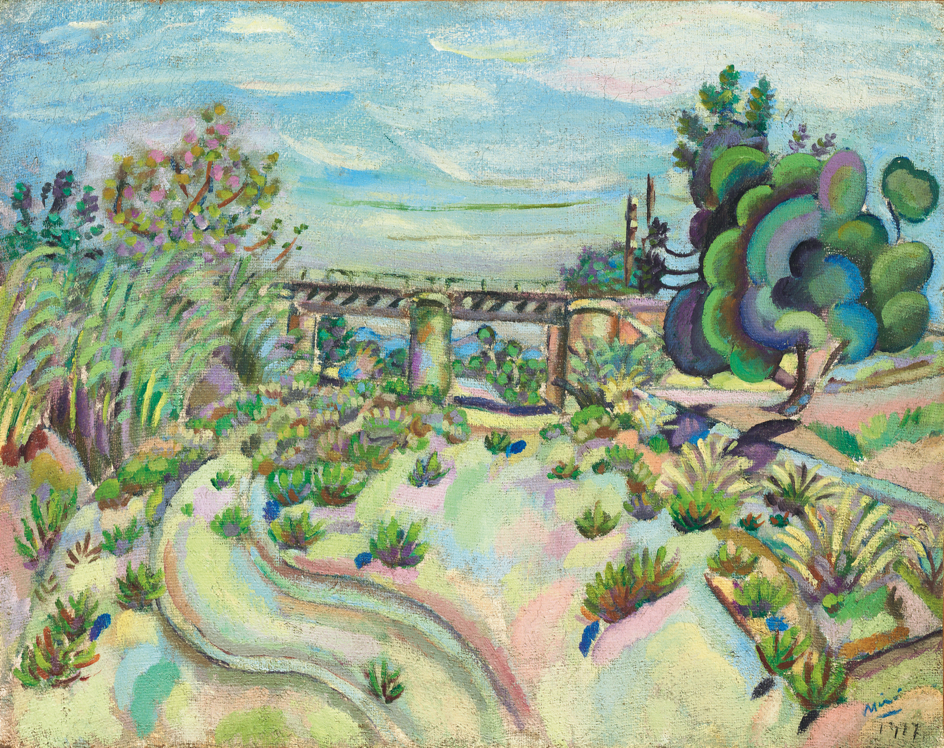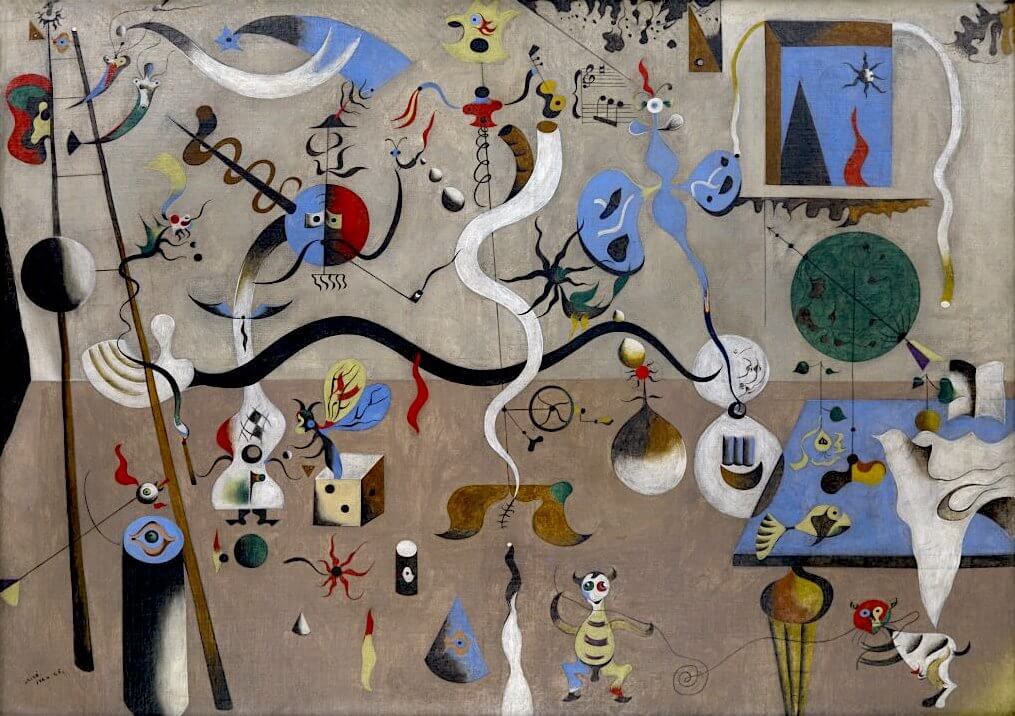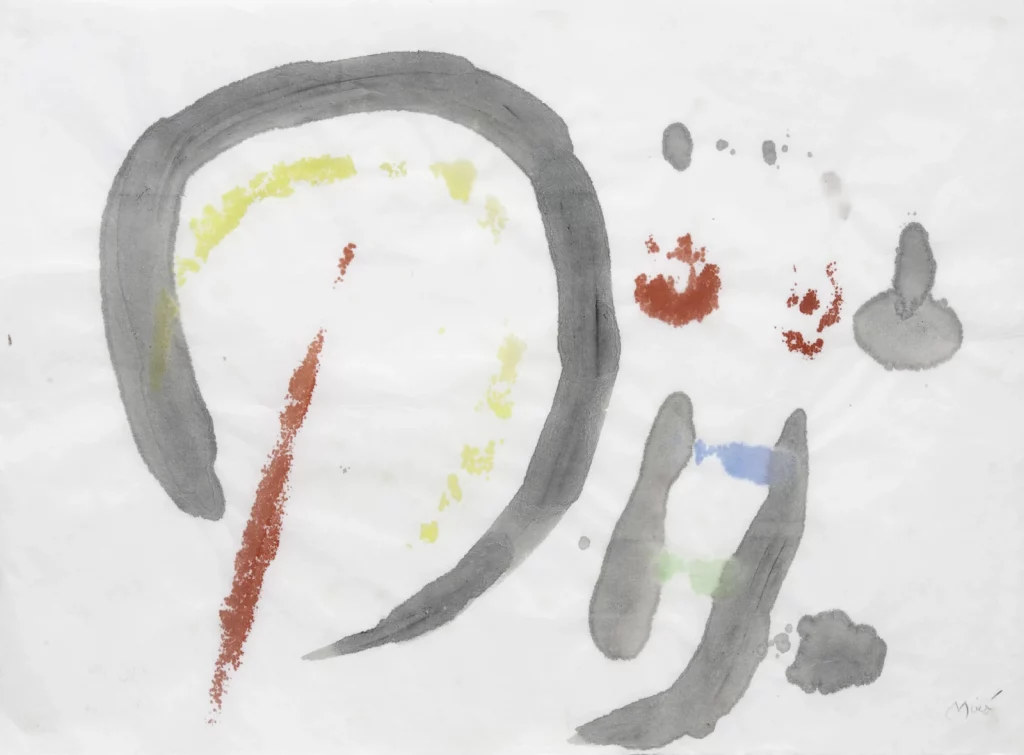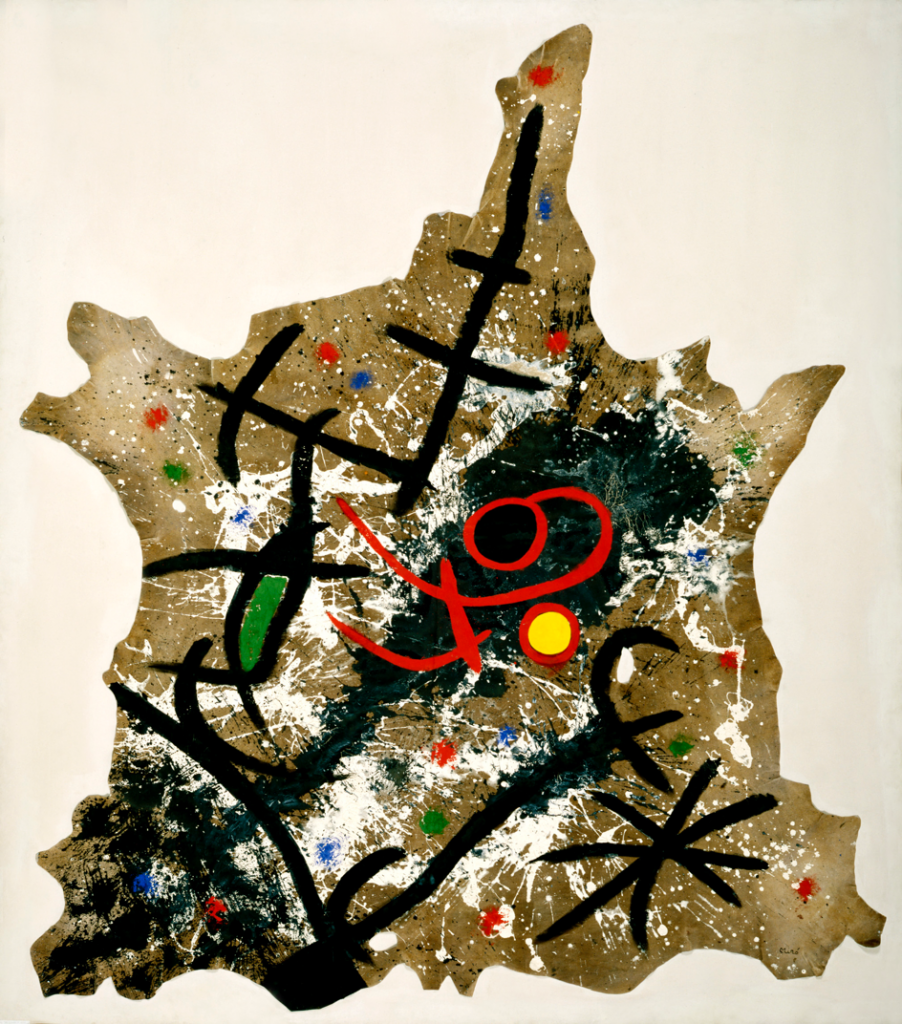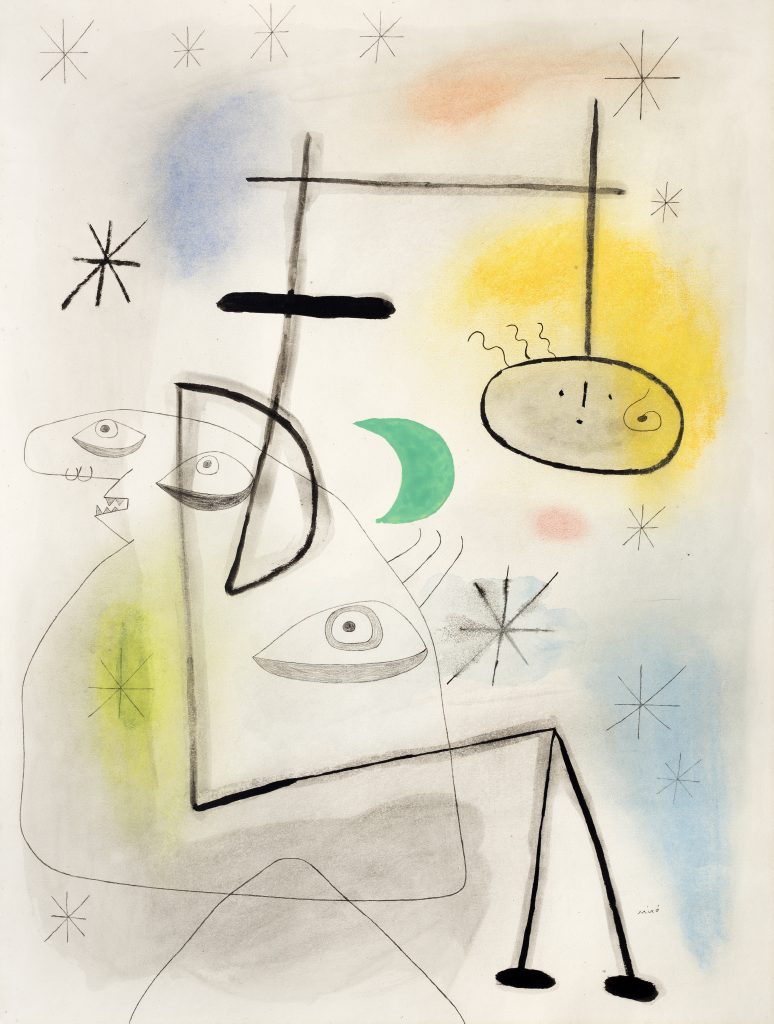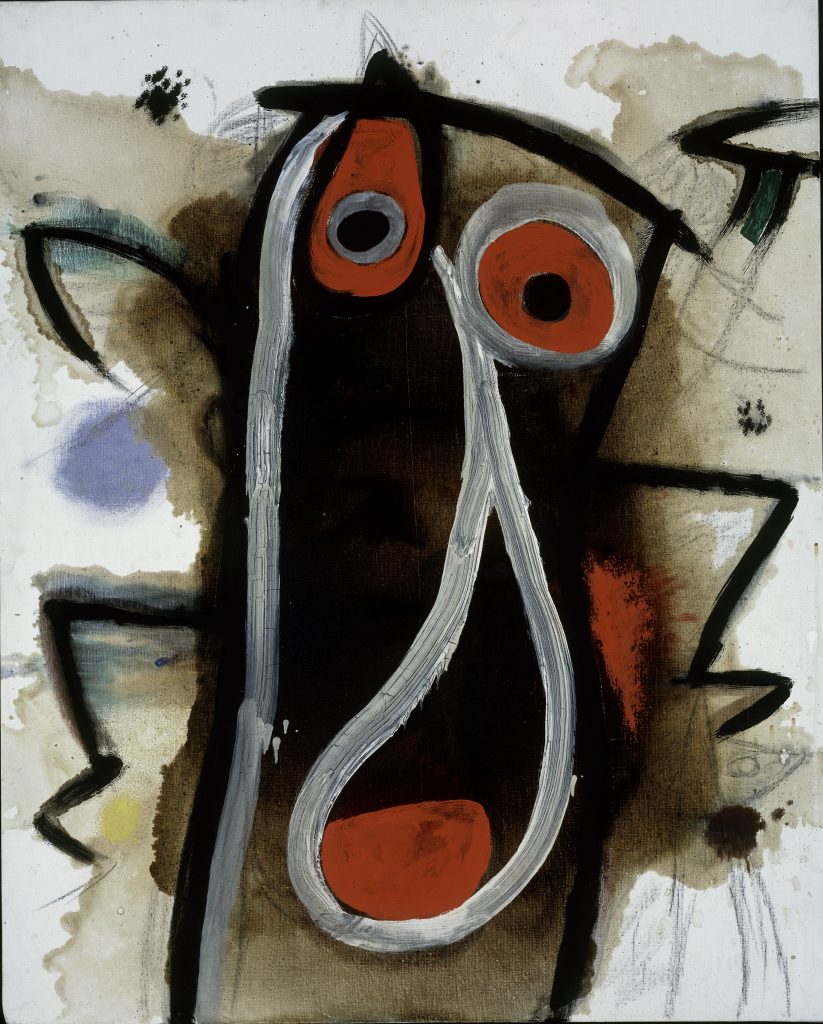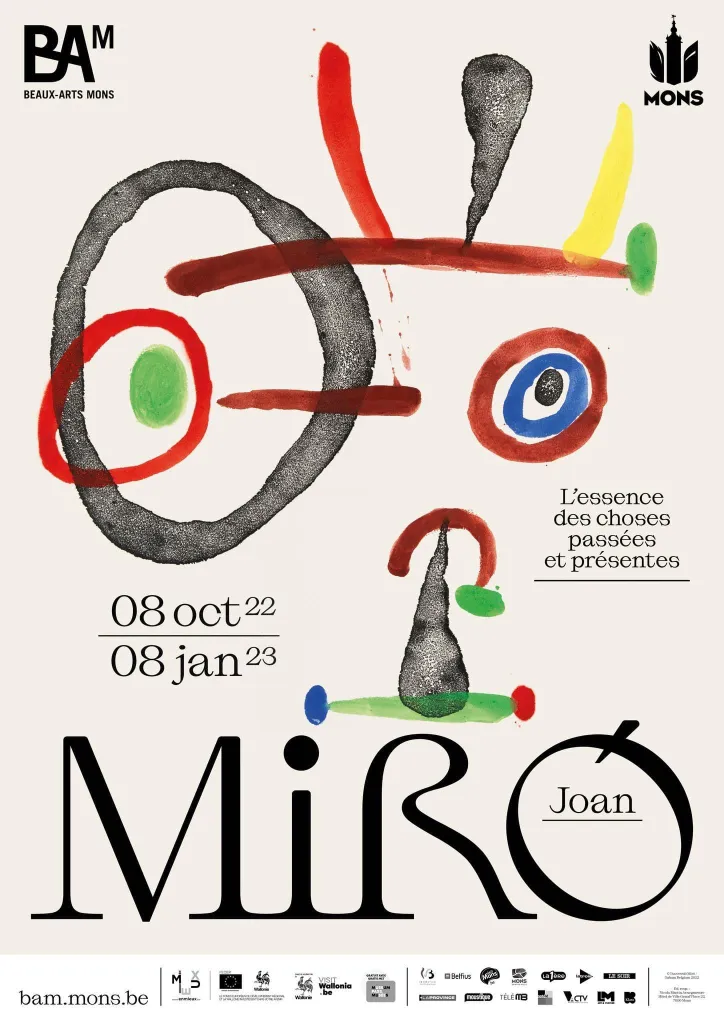Training Years
Like many major artists of his time, Miró received a thorough traditional artistic education. He studied drawing and decorative arts. Thanks to his teachers, he was introduced to popular artistic trends and discovered the allure of empty spaces and night landscapes. Miró gradually developed a passion for color that remained with him for his entire life.
During this time, Miró also developed a keen interest in contemporary movements, particularly Fauvism and Cubism. The colors of the former and the structural principles of the latter, as well as the coastal villages of his region, such as Mont-Roig, inspired him tremendously.
A Dialog with the Past
Miró maintained a lifelong dialog with art history. He was interested in ancient Roman art, Italian and Northern Renaissance, and Dutch Golden Age. The exhibition includes an interactive digital device to learn more about those influences. It shows us how Miró transformed history through the lens of his vision to create some of his own works. For example, we can understand that the painting Harlequin’s Carnival has connections with the work of Hieronymus Bosch. On the canvas, Miró scattered many small figures, inspired by the creatures in Bosch’s Garden of Earthly Delights.
Miró often visited museums and art galleries. He also owned an extensive collection of art books and magazines, exhibition catalogues, photographic reproductions of paintings, and art-related newspaper and magazine clippings. One of the exhibition’s strengths is that it shows us a large part of this collection. You will see old publications devoted to Etruscan art, Giotto’s works, Japanese art and calligraphy, as well as French modern art. You will also see more personal objects of Miró’s daily life, such as museum postcards he often sent to his friends.
Breaking Free from Classical Western Traditions
Miró developed a keen interest for Far Eastern art, particularly Japanese calligraphy which is highlighted in one of the exhibition rooms. Japanese influences significantly impacted Miró’s art throughout his life. This symbiotic art of writing and drawing represented a way for him to reach poetry in a visual form. He was also aware of the ritual associated with its conception: the creative act is performed in a meditative state. Contemplation and creation coexist. The void is used to compose the works, and the elements are balanced and anchored in Zen minimalism.
Miró always associated artistic creation with discipline and meticulous planning. These tendencies explain his preference for Japanese practices.
However, he did not visit Japan until the latter part of his life (at the age of 73 and again at 76). These trips were, of course, a source of stimulation for this insatiably curious man and inspired a new wave of creation.
Aside from Japan, other influences helped him to break free from classical Western art, most notably his interest in his native country’s heritage: prehistoric cave paintings, Catalan-Roman frescos, and traditional Catalan art. He frequently visited the Barcelona Archaeological Museum, local Roman churches, and the villages of Siurana and Prades. Miró experimented on various supports, even animal skins, in order to maintain contact with these ancestral art forms.
Artistic Creation As an Endless Enthusiasm
The exhibition at BAM reminds us that Miró was a hardworking student, but above all, a curious individual who was always on the lookout for knowledge. Throughout his life, he was open to what the world had to offer. This retrospective focuses on numerous influences that served him as an endless source of inspiration. A genuine approach in support of a demanding and deeply personal artistic vision. This is what makes each of his works so distinguishable.
The BAM exhibition concludes with a screening of the documentary Theatre of Dreams. It depicts Miró, at the age of 85, making costumes for a young anarchist theater group. Miró was an excited and motivated person throughout his entire life, as if each project he commenced was his first one. It was undoubtedly this open attitude that enabled him to create this universal graphic language. A language that guaranteed him an unavoidable place in art history.
The exhibition Joan Miró: The Essence of Past and Present Things at BAM (Beaux-Arts Mons) in Mons, Belgium runs through January 8th, 2023. If you’re a Miró fan and happen to visit Belgium, make sure to go to BAM!
